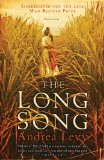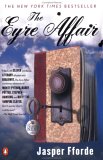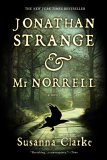Metafiction is an elastic concept covering a wide range of fiction but in essence boils down to stories in which the book blurs the line between reality and fiction by drawing attention to itself in some shape or form. To boil it down even further, you could say that it is fiction about fiction.
William H. Gass is attributed with establishing the term metafiction in a 1970 essay titled "Philosophy and the Form of Fiction". Commenting on American fiction of the 1960s, he pointed out that a new description was needed for the emerging genre of experimental texts that openly broke with the tradition of literary realism still dominant in post-WWII American literature.
 Some metafiction is like nesting dolls. For example, stories about readers reading books such as Elizabeth Kostova's The Historian (2005). Or writers writing books, such as Andrea Levy's The Long Song (2010), in which a woman is writing a book about Miss July, a slave. That woman turns out to be Miss July herself and she periodically comments on her experience of writing the story with her son looking over her shoulder as editor. Or the story might contain partial or complete stories within them such as David Mitchell's Cloud Atlas.
Some metafiction is like nesting dolls. For example, stories about readers reading books such as Elizabeth Kostova's The Historian (2005). Or writers writing books, such as Andrea Levy's The Long Song (2010), in which a woman is writing a book about Miss July, a slave. That woman turns out to be Miss July herself and she periodically comments on her experience of writing the story with her son looking over her shoulder as editor. Or the story might contain partial or complete stories within them such as David Mitchell's Cloud Atlas.
 Stories in which characters are aware that they are part of the story are metafiction. For example Jasper Fforde's Thursday Next novels; or where the narrator is shown to be the author of the story, such as The Brief and Wondrous Life of Oscar Wao by Junot Diaz.
Stories in which characters are aware that they are part of the story are metafiction. For example Jasper Fforde's Thursday Next novels; or where the narrator is shown to be the author of the story, such as The Brief and Wondrous Life of Oscar Wao by Junot Diaz.
 Books where the reader of the story can influence how the story develops are also considered to be metafiction. Children's picture books, where readers feel they influence the action, provide a rich vein of examples, such as Kenn Nesbitt's More Bears! In fact, there's likely a good case to make that the fast growing wealth of ebooks for children where the reader influences the course of the book by interacting with it are, in essence, examples of metafiction.Footnotes in fiction are another example. Where nonfiction footnotes tend to be used to clarify or support points in the text, fictional footnotes are an essential part of the story, used as a device to comment, often ironically, on the story while expanding on it; for example Jonathan Strange and Mr Norrell by Susanna Clark.
Books where the reader of the story can influence how the story develops are also considered to be metafiction. Children's picture books, where readers feel they influence the action, provide a rich vein of examples, such as Kenn Nesbitt's More Bears! In fact, there's likely a good case to make that the fast growing wealth of ebooks for children where the reader influences the course of the book by interacting with it are, in essence, examples of metafiction.Footnotes in fiction are another example. Where nonfiction footnotes tend to be used to clarify or support points in the text, fictional footnotes are an essential part of the story, used as a device to comment, often ironically, on the story while expanding on it; for example Jonathan Strange and Mr Norrell by Susanna Clark.
Although metafiction maybe a relatively new term, its use in literature is not new. For example, Chaucer's late 14th century Canterbury Tales nests stories within stories; and Cervantes uses a fictional chronicler to relate the adventures of Alonso Quijano in Don Quixote. And, of course, the same concepts can be seen in other arts, such as a traditional pantomime with audience participation.
Agree? Disagree? Have additional examples of metafiction in action? Please do post below!